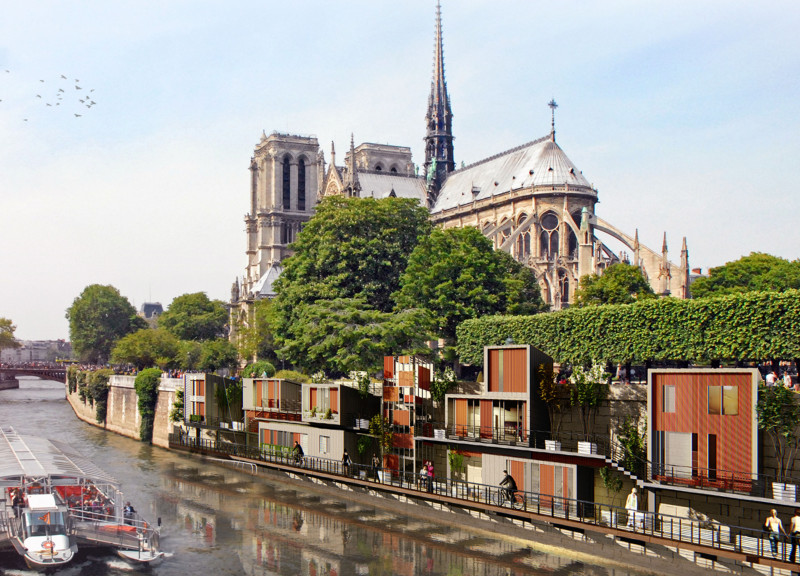5 key facts about this project
The project represents a synthesis of contemporary design and sustainability, acknowledging the significance of the Seine as a vital link in urban life. Rather than simply addressing the basic need for shelter, this architectural endeavor prioritizes the integration of residential units with public realms. This unique approach allows for seamless transitions between private living spaces and communal areas, encouraging social interaction among residents and visitors alike. The design supports the idea that housing can be more than just a place to live; it can be a catalyst for community engagement and environmental stewardship.
At the heart of the project are the modular housing units, characterized by a variety of heights and forms that complement the surrounding architectural landscape. Designed to echo the historical context, the residential modules incorporate modern materials and construction techniques that enhance durability and aesthetic appeal. The incorporation of outdoor terraces and landscaped walkways promotes a lifestyle that values outdoor activities and interactions, echoing the natural allure of the Seine.
Material choices play a crucial role in this architectural project, with a focus on sustainability and functionality. The use of perforated weathered steel introduces an element of industrial design while ensuring the structural integrity of the building. Composite zinc sandwich panels contribute to effective insulation, making the housing units comfortable and energy-efficient. Aluminum louvers are strategically placed to enhance natural ventilation, allowing for light and air circulation that contributes to the overall well-being of residents. Additionally, wood flooring within the spaces adds warmth and comfort, while steel structures provide essential stability.
This architectural design also places emphasis on sustainable features and practices. The integration of rainwater harvesting systems and solar panels highlights a commitment to renewable energy and efficient resource management. These elements work in tandem to reduce the environmental impact of the housing units while creating an inviting living environment. The careful attention to water management and energy use reflects a broader understanding of ecological responsibility, essential in modern urban design.
Uniquely, this project situates itself along one of the most important waterways in the city, between the 1st and 15th arrondissements. This strategic location enhances the potential for community engagement and revitalizes the connectivity between residents and the vibrant cultural landscape of Paris. The design acknowledges the historical significance of the Seine while presenting a contemporary solution that is relevant to today’s demographic needs.
Furthermore, the architectural approach advocates for flexibility in design and use. The modular layout allows for a range of dwelling types, from single-family homes to multi-unit complexes, accommodating diverse lifestyles and family configurations. This adaptability is key in responding to the dynamic nature of urban life, making the project an enduring asset to the community.
The overall design philosophy reinforces the notion that the built environment can enhance urban living. By prioritizing public interaction, environmental sustainability, and aesthetic sensitivity, this architectural project acts as a model for future developments along the Seine and in other urban settings. The commitment to blending function with form offers valuable lessons about how architecture can inform and improve the quality of urban life.
For those interested in a deeper understanding of this project, exploring elements such as architectural plans, architectural sections, and architectural designs will provide further insights into the intricate details and innovative architectural ideas that define this endeavor. This exploration is encouraged for a comprehensive view of how this project seeks to redefine the relationship between housing and public space along the Seine.


























